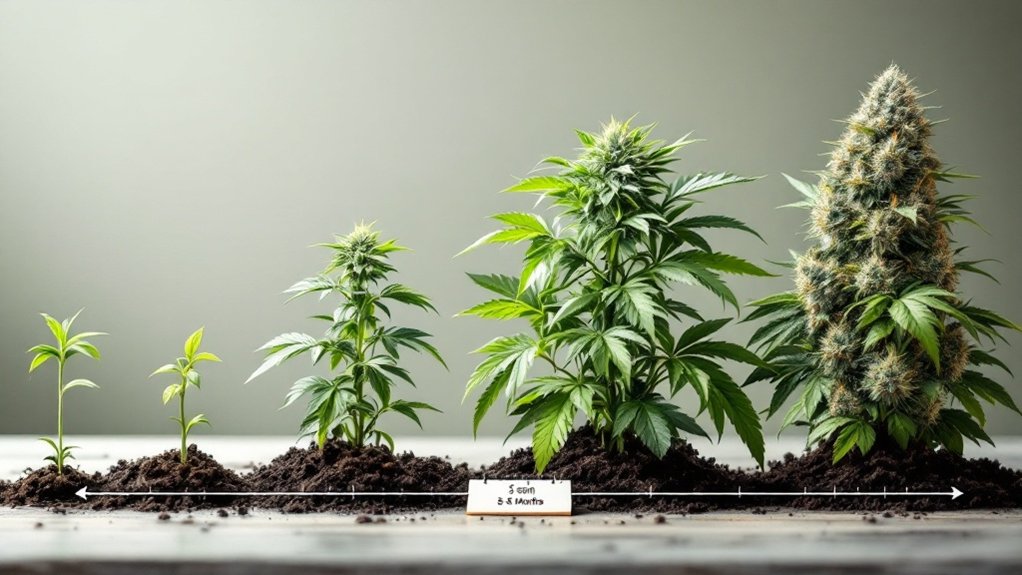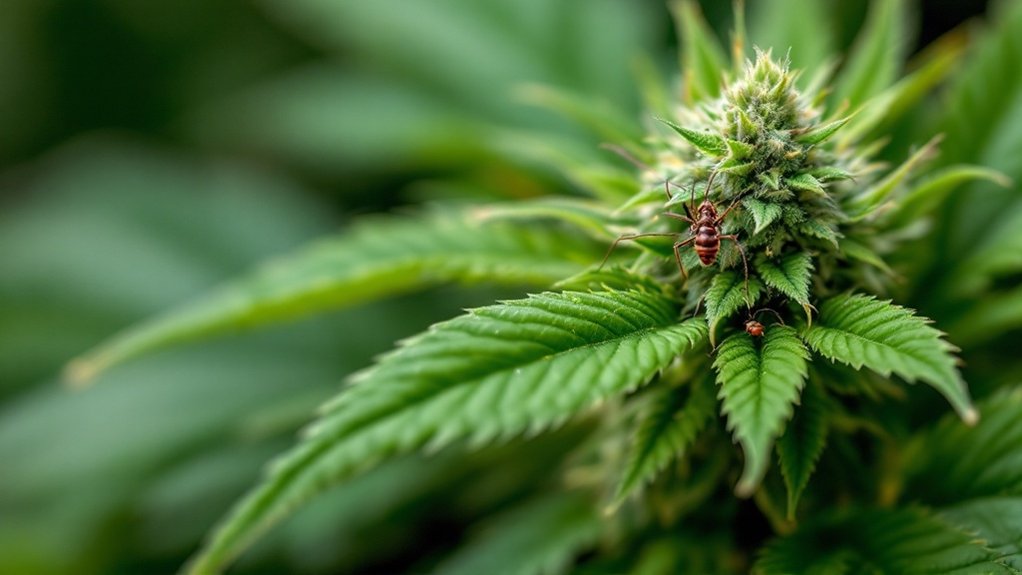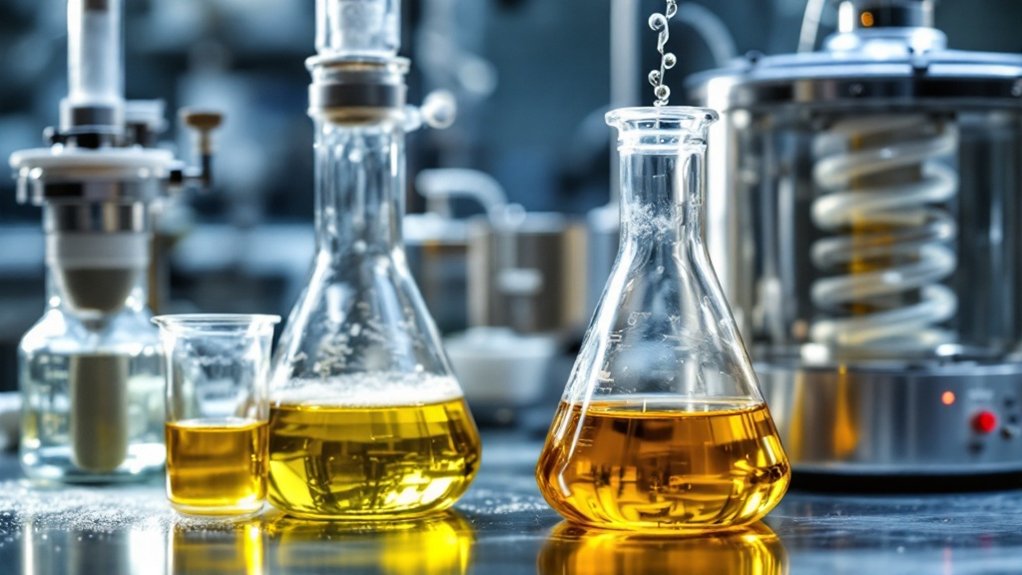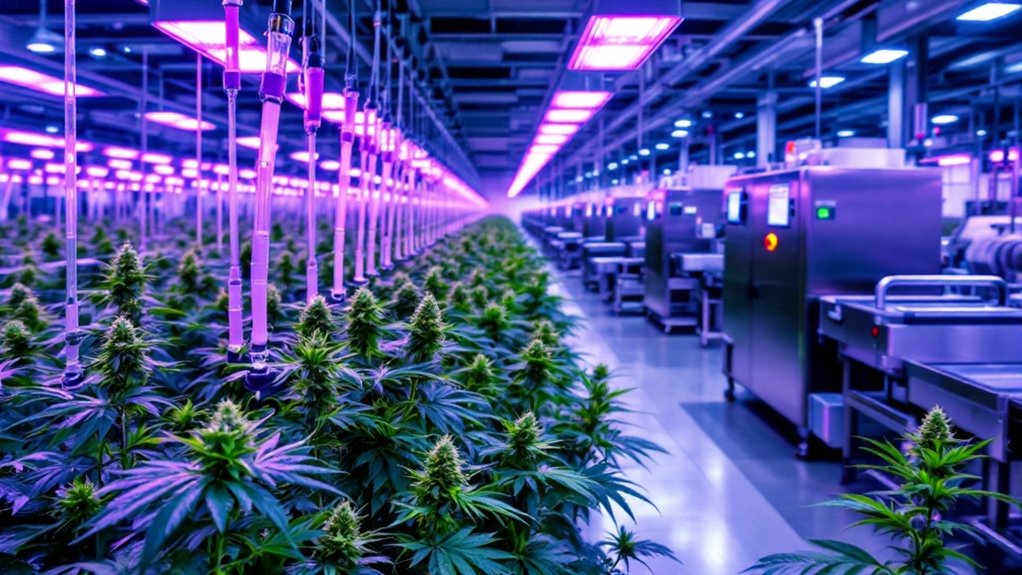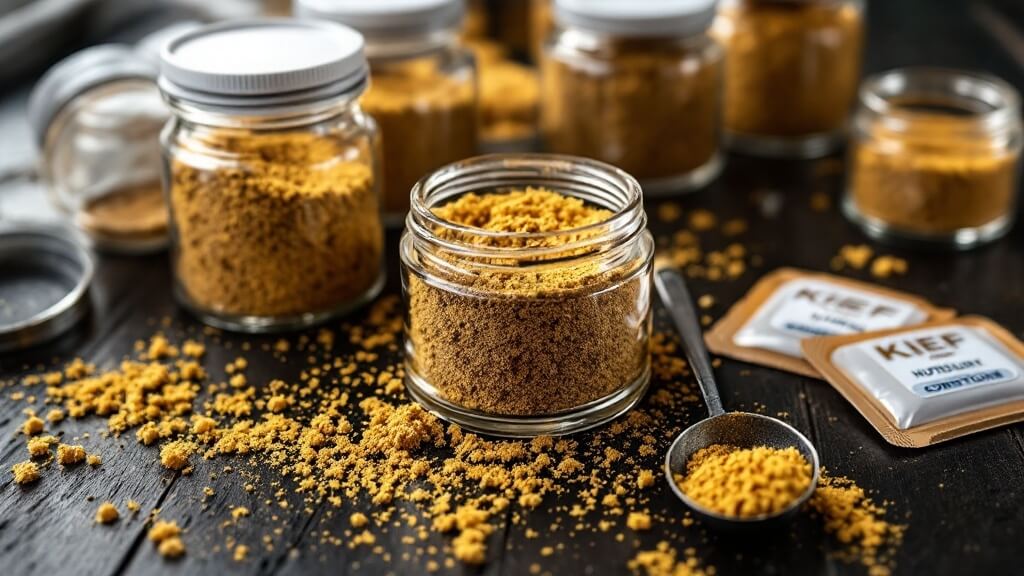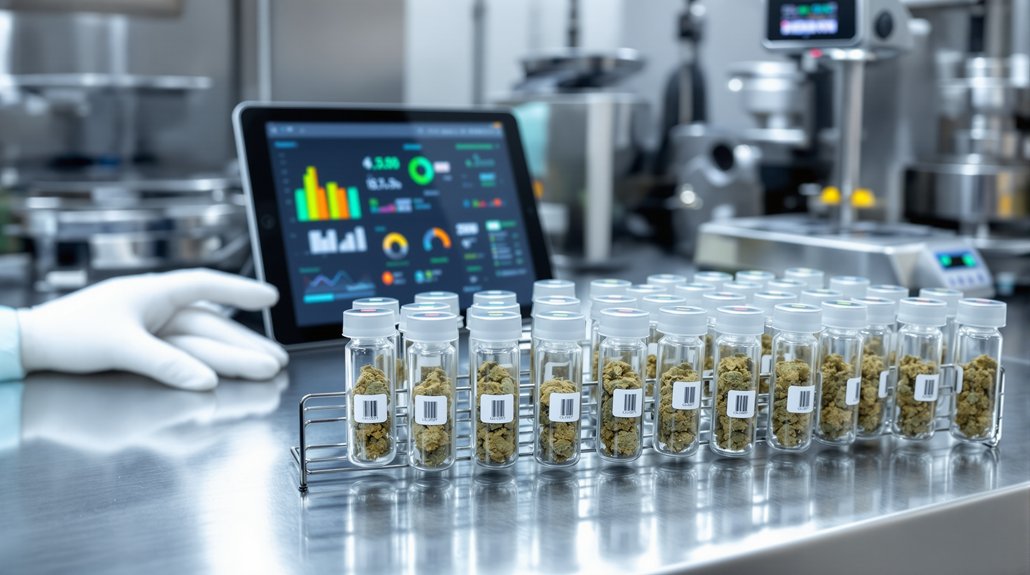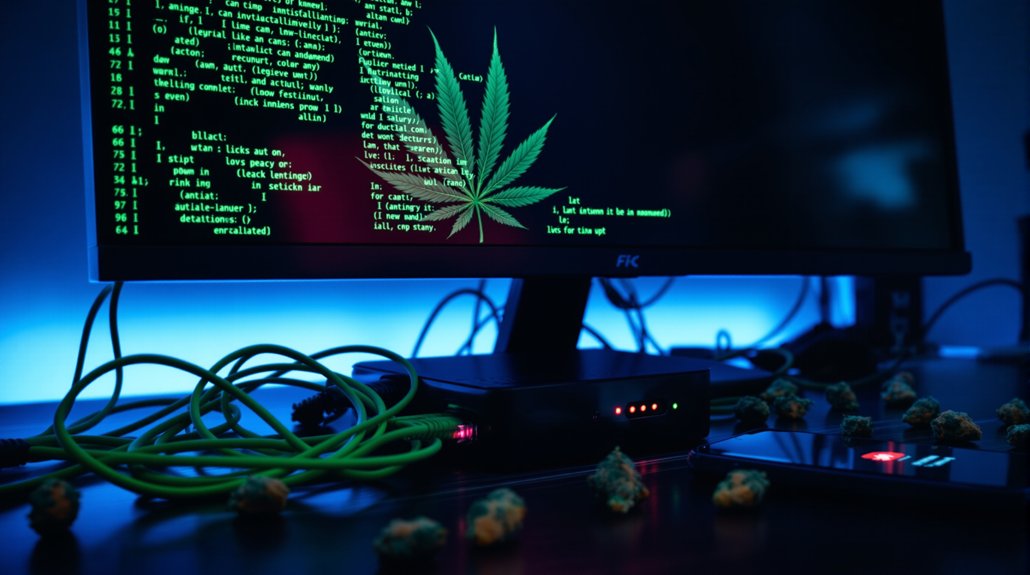Cannabis plants typically take 10 to 32 weeks from seed to harvest, depending on strain genetics and growing conditions. Germination requires 1-7 days, followed by 2-3 weeks in the seedling stage. Vegetative growth spans 2-8 weeks, while flowering demands 6-12 weeks for complete bud maturation. Indoor cultivation offers more control over this timeline than outdoor growing. Various factors like cultivation methods and environmental conditions greatly influence the total duration of this botanical journey.
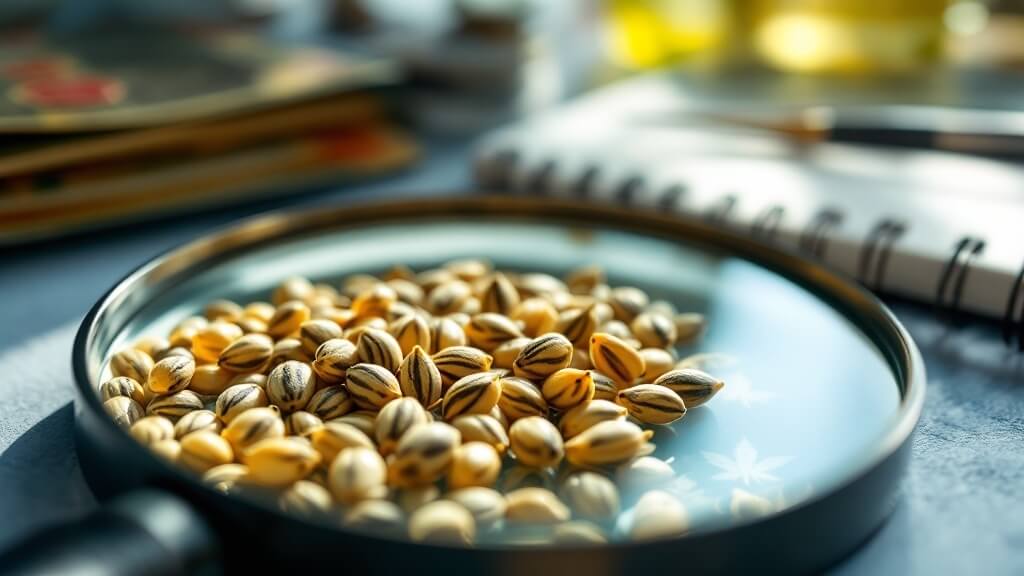
While many novice growers expect quick results when cultivating cannabis, the complete growth cycle from seed to harvest typically spans between 10 and 32 weeks, depending on various factors including genetics, growing conditions, and cultivation methods.
Starting with clones rather than seeds can greatly reduce overall cultivation time, as rooted cuttings have already completed the earliest development stages. Indoor growing environments provide cultivators with greater control over the flowering timeline compared to outdoor settings, where plants follow natural seasonal light cycles.
Starting with clones offers significant time advantages, while indoor cultivation provides precise control over flowering that outdoor growing simply cannot match.
The journey begins with germination, a process requiring 1-7 days under specific temperature and humidity conditions, though some seeds may take up to two weeks to sprout. Indica varieties typically reach this milestone faster, with faster germination rates than pure Sativas. Successful germination is marked by the emergence of the taproot from the seed coat.
The seedling stage follows, lasting approximately 2-3 weeks, during which the young plant develops its first true leaves with characteristic serrated edges. This represents a vulnerable period requiring gentle lighting and careful watering protocols to prevent stunting or disease. High humidity levels of 65-70% are recommended to create optimal seedling conditions during this critical development phase. Additionally, ensuring seedlings receive a daily light period of 14 to 16 hours can promote healthy growth.
Vegetative growth spans 2-8 weeks, characterized by rapid development of stems, leaves, and branches. During this nitrogen-intensive phase, indoor growers can extend the vegetative period by maintaining 18+ hours of light daily, allowing plants to achieve desired size before flowering begins.
Pre-flowering marks the shift between vegetative growth and flowering, lasting 1-2 weeks as plants reveal their sex characteristics and undergo a considerable vertical stretch.
The flowering stage constitutes the longest single phase, requiring 6-12 weeks as buds form and mature. Indoor cultivators trigger flowering by reducing light exposure to 12 hours daily, while outdoor plants respond naturally to decreasing autumn daylight.
Trichome development progresses from clear to cloudy to amber, with harvest timing influencing the final product’s effects. Earlier harvests with mostly cloudy trichomes produce more energetic experiences, while later harvests with amber trichomes typically yield more sedative effects.
Post-harvest processing, including drying and curing, represents the final step in cannabis cultivation. This essential period enhances the product’s flavor, aroma, and potency, completing the seed-to-consumption journey.
For cultivators seeking best results, understanding each growth stage’s requirements and duration enables successful cannabis production regardless of growing environment or strain selection.
Frequently Asked Questions
Can I Grow Cannabis in a Small Apartment?
Growing cannabis in a small apartment is feasible with proper planning.
Small-scale cultivation requires compact strains like autoflowers that reach 1-4 inches in height, fitting in grow tents as small as 24×24 in.
Environmental control presents the greatest challenge, necessitating carbon filters and proper ventilation to manage odor.
Legal considerations remain paramount, as apartment leases may prohibit cultivation regardless of state legality, potentially resulting in eviction if discovered.
What’s the Best Way to Handle Pest Infestations?
Effective pest management requires a multi-faceted approach beginning with prevention.
Regular monitoring allows early detection before infestations become severe.
Integrated Pest Management (IPM) combines biological controls like beneficial insects with organic solutions such as neem oil and diatomaceous earth.
Environmental factors play an essential role; maintaining proper humidity, temperature, and air circulation naturally deters many pests.
When infestations occur, quarantine affected plants immediately and implement rotating treatment protocols to prevent resistance development while monitoring for complete eradication.
How Do Different Lighting Systems Affect Yield Quality?
Different lighting systems greatly impact cannabis yield quality through spectrum composition and intensity.
LEDs produce higher cannabinoid and terpene profiles than HIDs due to their customizable spectrum, which enhances trichome development and chemical potency.
While HID systems deliver good yields, they generate more heat and consume more energy than modern quantum board LEDs.
Full-spectrum lighting supports ideal cannabinoid synthesis, whereas poor-spectrum options typically result in fluffier buds with reduced potency and diminished aromatic complexity.
Is It Better to Grow From Seeds or Clones?
The choice between seeds and clones depends on specific requirements and circumstances.
Seeds offer genetic diversity, stronger taproots, and reduced risk of pests, but require additional time and may produce varying phenotypes.
Clones provide genetic uniformity, faster growth cycles, and guaranteed female plants, though they lack taproots and may carry diseases from mother plants.
Commercial growers often prefer clones for consistency, while hobbyists might value the exploration and resilience that seed-grown plants provide.
How Can I Prevent Mold During the Drying Process?
Preventing mold during cannabis drying requires maintaining specific environmental conditions.
Humidity should be kept between 45-55%, with temperatures at 60-70°F (15-21°C). Proper air circulation using indirect fans prevents moisture pockets, while adequate spacing between hanging buds guarantees even drying.
A clean, dedicated drying space minimizes contamination risks. Growers should install air filtration systems to remove mold spores and keep the area dark to preserve cannabinoids.
Regular inspection throughout the drying process helps identify early signs of mold.
